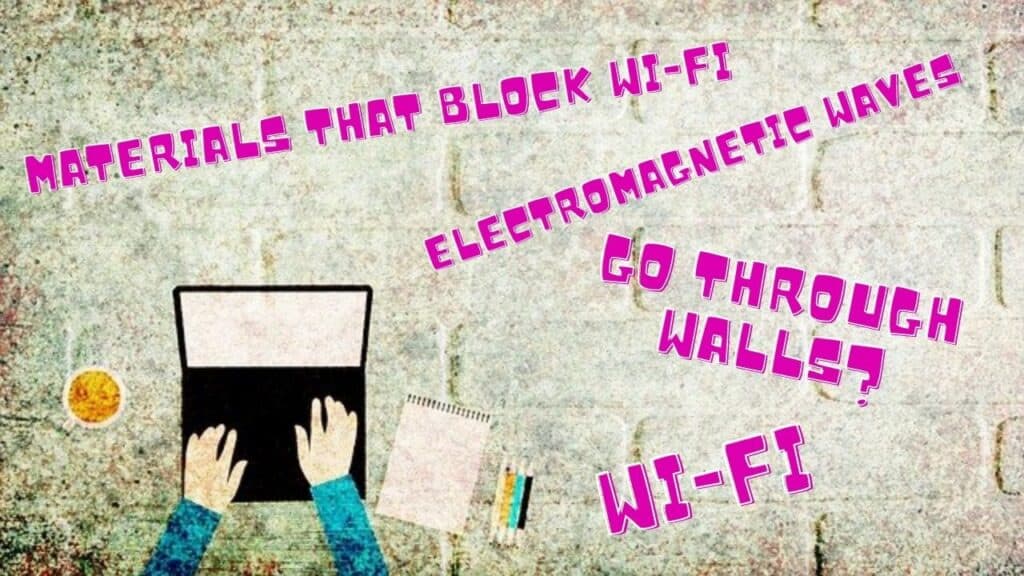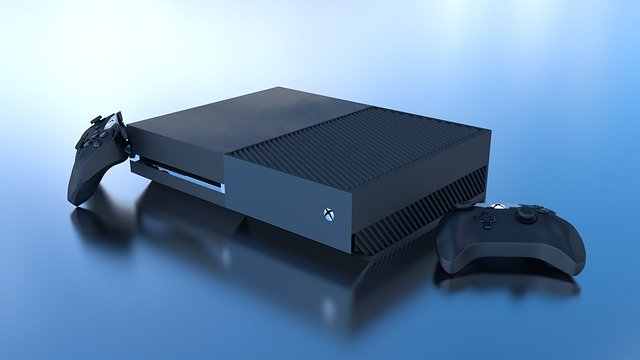
Wi-Fi has become a necessity in our modern world, allowing people to stay connected, receive and transfer information anytime and anywhere. It’s able to travel through most obstacles, but what about walls?
Yes, Wi-Fi does indeed go through walls. However, several factors may block the passage of radiation through walls, such as the material used to make the wall. Thicker materials like concrete and metal may block the signals from reaching you.
Wi-Fi has many benefits, but certain aspects, from how it propagates through objects to its impact on health, are widely overlooked.
Keep on reading to discover more about how Wi-Fi radiation move through walls and its effects on your health!
How Do Wi-Fi Waves Travel?
Wi-Fi waves are radio waves, a type of electromagnetic wave. Therefore, in contrast to mechanical waves, radio waves can travel in the absence of a medium.
They are transverse waves, so particles do not move in the direction of motion of the wave. But perpendicular to it in an up and down manner about their equilibrium position.
These waves travel at the speed of light and with a specific frequency of either 2.4GHz or 5GHz. Hertz is a unit of frequency used to represent the number of waves traveling per second.
In the case of GHz, it means that 1 billion waves are traveling per second. As waves propagate from the Wi-Fi router, they pass through the air and various obstacles, such as walls.
In doing so, they lose energy to the matter present, and the signal becomes weaker. The further the distance traveled, the more energy is lost.
Eventually, the waves will lose all their energy. Due to this, Wi-Fi signals have a specific range and are restricted depending on the medium they travel through.
Materials That Block Wi-Fi
Wi-Fi is blocked by different materials, namely electrical conductors, concrete walls, and reflective materials.
Each material blocks it in specific amounts and in its own way.
The most effective blockers are building materials such as:
1. Electrical conductors
Electrical conductors, especially metals, are the best Wi-Fi blockers due to their conductive ability. Since Wi-Fi waves are electromagnetic waves, they can be easily absorbed by conductors leading to a loss in energy of the signal.
Therefore, the larger and thicker the conductor, the greater is the attenuation. In many cases, the Wi-Fi signal is blocked entirely.
2. Concrete and masonry walls
Wi-Fi signals have a difficult time penetrating through concrete and masonry walls. The main reason is that such structures are built thick to contribute structurally and protect against environmental elements, such as heavy rains and storms.
Due to internal structures present, the thickness and the incredible density of walls can slow down and block signals to a large extent, if not entirely.
3. Reflective materials
Reflective materials include mirrors, tinted windows, and glass. Instead of absorbing waves like some other materials, they reflect radiation and prevent them from passing through.
For mirrors and tinted windows, they contain a thin metallic film that gives them their reflective nature. Mirrors and tinted windows contain a thin metallic film that gives them their reflective nature.
While the thin metallic film can absorb part of the Wi-Fi signals, most waves are reflected off the mirror surface. As for glass, the extent of reflection depends on the emissivity (emit infrared energy) of the glass.
The lower the emissivity, the greater the extent of reflection.
Interference In The House
Within your home, there may be many causes of Wi-Fi interference. They often go unnoticed despite their significant impact on the signal.
The following are some of the major sources of interference:
1. Devices Operating At The Same Frequency As Wi-Fi
Having other devices operating at the same frequency as the Wi-Fi signal can be a great hindrance. It slows down the signal and causes interference.
Baby monitors, cordless phones, and microwaves are just examples of devices operating at the 2,4GHz frequency. Therefore the 2.4GHz region is a crowded one.
As a result, it is often recommended to change the Wi-Fi to 5GHz to reduce interference with older devices.
2. Electrical Appliances
Refrigerators, televisions, dishwashers, and stoves are perfect examples of interference-causing appliances. Due to electrical components and metals in them, they can easily interfere with the Wi-Fi signal.
To diminish their effect, you must keep such appliances as further away as possible from the router.
3. Bluetooth
Bluetooth devices such as headsets, speakers, and keyboards can also interfere with Wi-Fi. Both Bluetooth and Wi-Fi operate over the same 2.4GHz range.
Thus interference is always present, but this isn’t the main issue. Bluetooth uses Frequency Hopping Spread Spectrum (FHSS).
Due to this technology, Bluetooth changes its frequency to 79 different 1 MHz-wide channels. It does so by hopping between frequencies almost 1600 times per second.
Combining this rapidly changing signal with a Wi-Fi signal leads to varying interference. It slows down the radiation and alternates it by different severities.
Health Effects of Wi-Fi
Wi-Fi equipment can emit electromagnetic fields (EMF) as it is caused by electromagnetic radiation. Long-term exposure to EMF can have detrimental effects on one’s health.
According to a study from the Environmental Research Journal, EMF influences the chemical structure of tissues and cells.
EMF radiation can lead to cellular damage and influence the antioxidant defense system.
The most common and mild symptoms being:
- Headaches
- Sleep disturbance
- Dizziness
- Fatigue and lack of concentration
You can also experience larger-scale impacts on the nervous system from continuous overexposure leading to neurological and psychological issues.
It has also been found that EMF radiation may lead to cancer and cause hormonal instability in the reproductive system.
In males, testosterone level has seen a decline, whereas a reduction in the production of estrogen and progesterone was observed in females.
Protect Yourself Against EMF Radiations
With all the risks present due to radiation, it is time to take our health into our own hands. Protection from EMF radiation is vital.
The market is filled with various products capable of blocking such radiation. However, DefenderShield has been found to be the most effective.
DefenderShield has developed a technology able to conduct, absorb and dissipate 99.9% of EMF radiation up to frequencies of 90GHz.
Thus, it can shield you from Extremely Low Frequency (ELF) radiation to the fifth generation (5G) wireless radiation. The available products range from cell phone cases to headphones and even laptop shields.
With the use of protective equipment, your daily exposure to EMF is reduced, making you less prone to the risks of prolonged exposure to Wi-Fi radiation.


